The first proof of a building on the plot can be found from 1802, noting a prayer room and a flat for a pastor. Antal Balla planned a two-storey house in 1804 with a prayer room, a schoolroom and again, a flat for the pastor. This was when Hungarian education for the children of Calvinist families began. The first teacher was the pastor, Gábor Báthory himself.
The number of children grew steadily, a theological institute began operating in the building before 1855, and in 1859 a Reformed Secondary School opened, following another expansion.
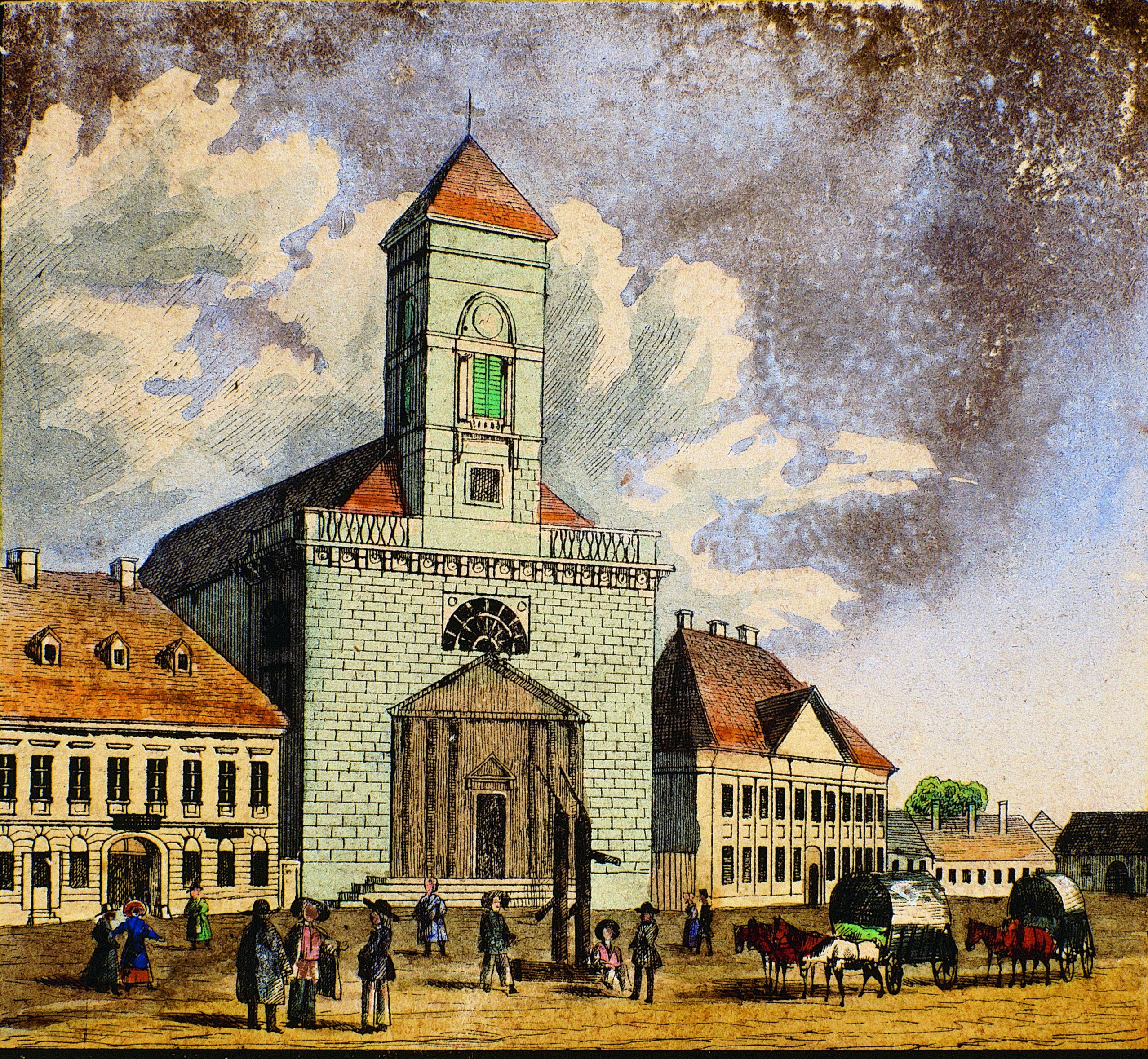
The Calvinist Church and the house designed by Antal Balla depicted in the frame of the map by Károly Vasquez published in 1837
(Source: Ferencváros Local History Collection)
Now a three-storey building, space became even more scarce, after an official primary school opened in a few rooms in 1869. In 1889 the secondary school eventually moved to 4/C Lónyay Street. The primary school was also moved to Lónyay Street, but the building remained full, as various shops filled the ground floor and much of the first floor.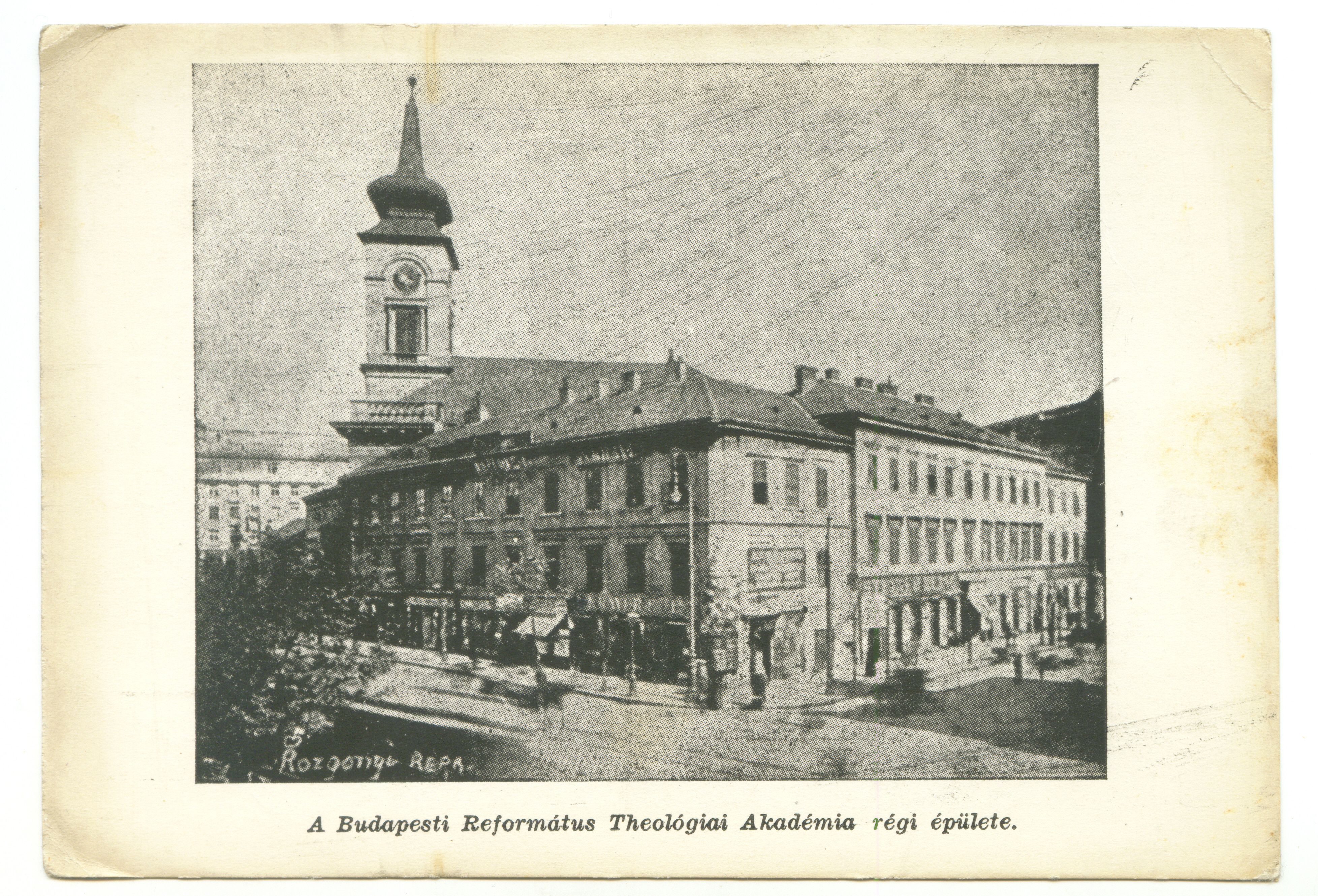
The building on a postcard issued around 1910 (Source: Ferencváros Local History Collection)
By the 1910s, the building was in such a run-down condition that its owner, the Reformed Church, decided to demolish it. In 1913, the Church, in collaboration with the city council, announced a tender for the renovation of the buildings around the church, in the area bordered by Ráday Street, the present-day Török Pál Street and Lónyay Street.
The tender required the plans to include buildings with both flats and shops for rent on the corners of Ráday Street and Kálvin Square, and Lónyay Street and Kálvin Square. Kálmán Reichl won the tender with two five-storey buildings including ground floors with high ceilings for these two corners.
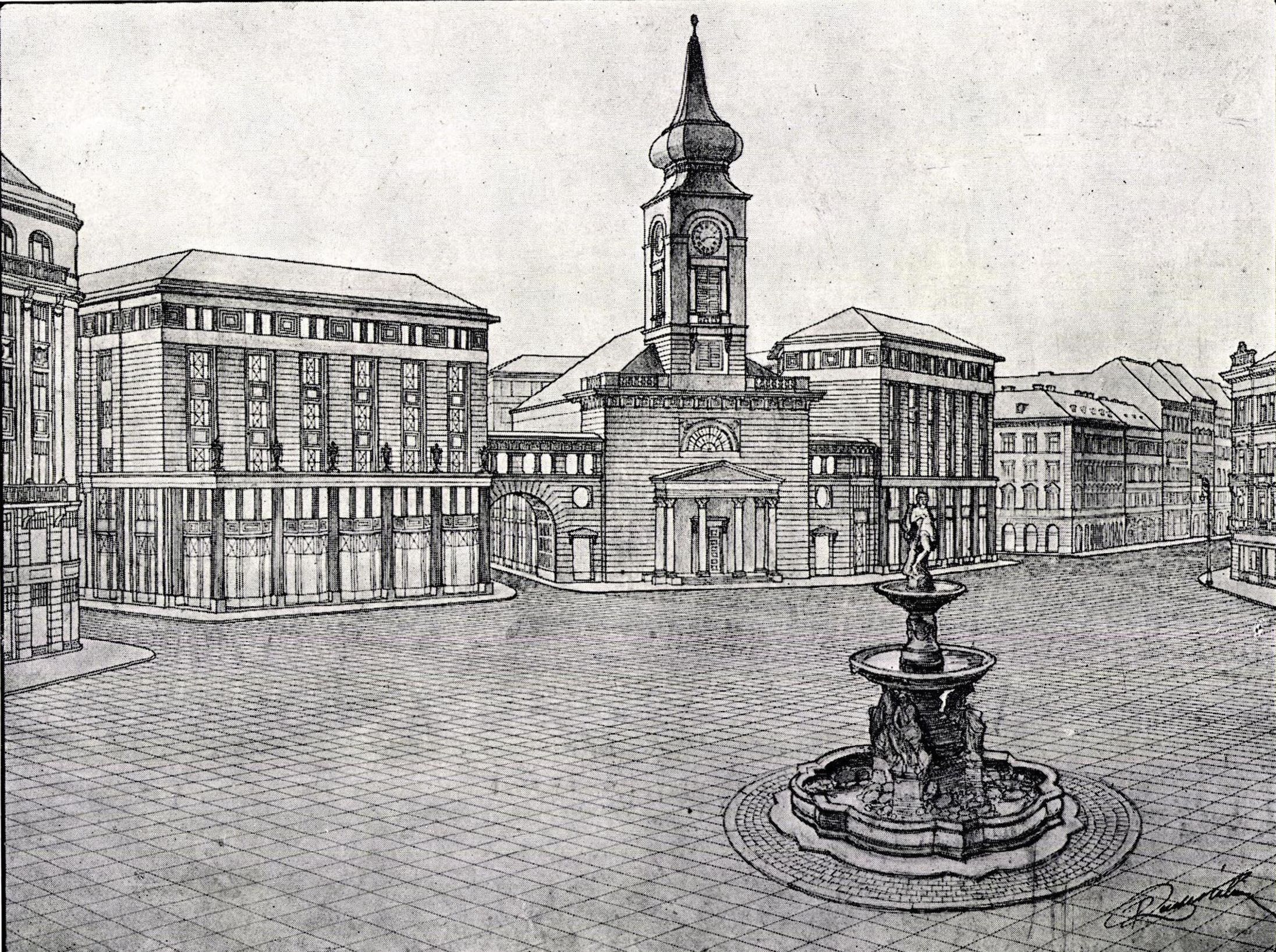
Kálvin tér as imagined by the architect Kálmán Reichl (Source: Hungarian Építőművészet, 1913/4.)
Demolition began, but World War I brought construction grinding to a halt, and the plot stood empty until June 1920. This was when the Reformed Church in Hungary leased the plot to the Magyar Kultúrház Irodalmi és Művészeti ('Hungarian Cultural Centre Literature and Art') Public Company. Created in the same year, the company planned to be active in Hungarian film and publishing. However, only a few of their films reached a premiere, as its finances proved unstable. It eventually closed in 1937, without ever turning a profit. Luckily, in 1920, the company still had funds to construct its headquarters and shop, and work was completed on the above-mentioned plot in 1922.
This was when Dezső Fenyves entered the picture. Fenyves was an outstanding businessman. His father owned a small haberdashery under 9 Károly Boulevard, which he hoped to pass on to his son. However, the young man first wanted to gain experience abroad. He travelled to Vienna, without finishing his university studies, and worked at several respected fashion-houses.
Returning home, he took over his father's business, then served in the First World War. After returning from the front, he continued to work as a merchant. In 1920, he opened a new business at 10 Károly Boulevard funded by a large loan. In 1922, he contacted the Magyar Kultúrház Irodalmi és Művészeti company and rented a significant part of the newly finished Kálvin Square store space.
By the end of the year, he advertised it as his own, independent store during the Christmas shopping season. He was promoted from tenant to operator in 1937 when the reformed Church signed a new contract with the businessman. Of course, the general public cared little about the ownership of the building. They were interested in the shop's services and goods, and the people of Pest loved the Fenyves Department Store.
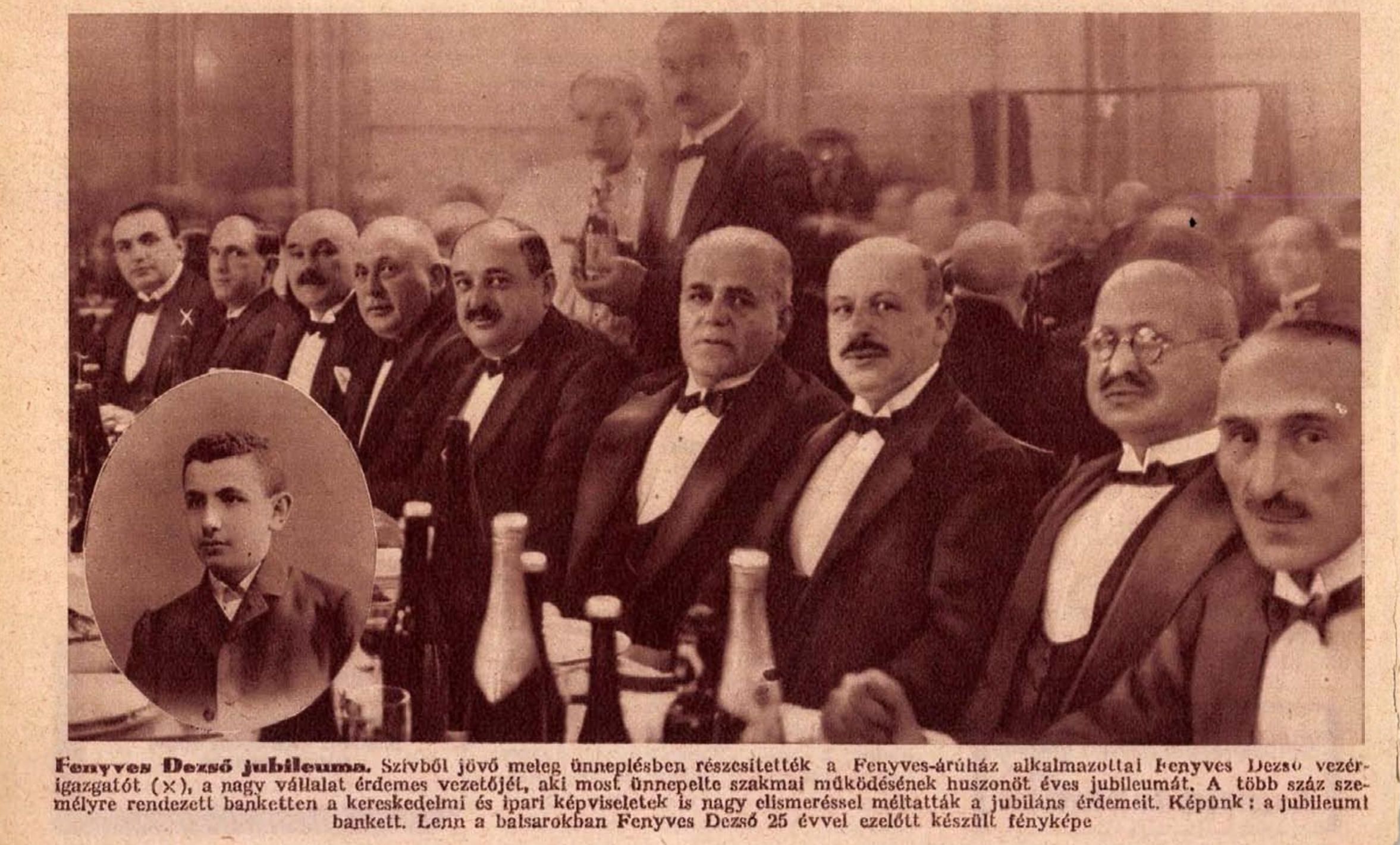
Dezső Fenyves and the company's management in the 25 June 1930 issue of Tolnai Világlapja
By the beginning of the 1930s, the Fenyves Department Store became one of Budapest's most important shops. The ground floor housed the men's and women's textile department, and other sections for gloves, suitcases, toys and school supplies, and even perfumes. The first floor offered silk, curtains, shoes, women's, men's and children's underwear, and other knitted and woven goods. On the second floor, shoppers could find coats, the ready-to-wear clothes department and the director's office.
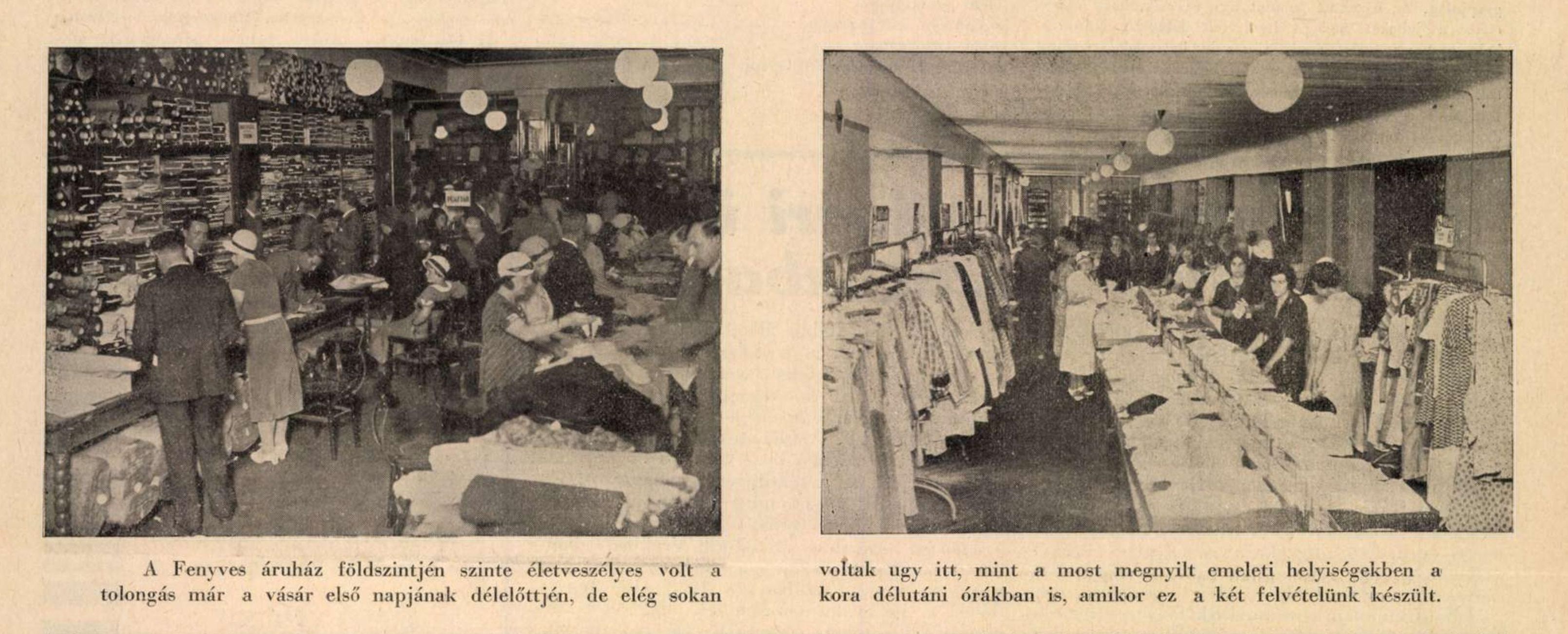
Shoppers and assistants in the Fenyves Department Store (Source: Textilipar, 18 July 1933)
The shop employed around 300 people. They served an average of 6,000 buyers a day. The owner, Dezső Fenyves, and the director, his brother, Jenő Fenyves, placed great emphasis on their staff's appearance and on motivating their team. The sellers received a monthly hairdresser rental, and their lunch was also taken care of by the management. They could purchase goods at a significant discount, and even pay for more expensive items in monthly instalments.
Dezső Fenyves also employed a doctor to check the health of his employees regularly. In addition to discounts and benefits, there were strict standards to adhere to. Fake buyers would test the work ethic and behaviour of assistants often. Of course, Fenyves also aimed to meet the demand of its real customers. He often employed methods, which, although common today, were rare at the time, to enhance interest in his wares. Discounts were offered on various types of goods each month, and at the end of each season, he would sell the remaining stock at a significant discount.
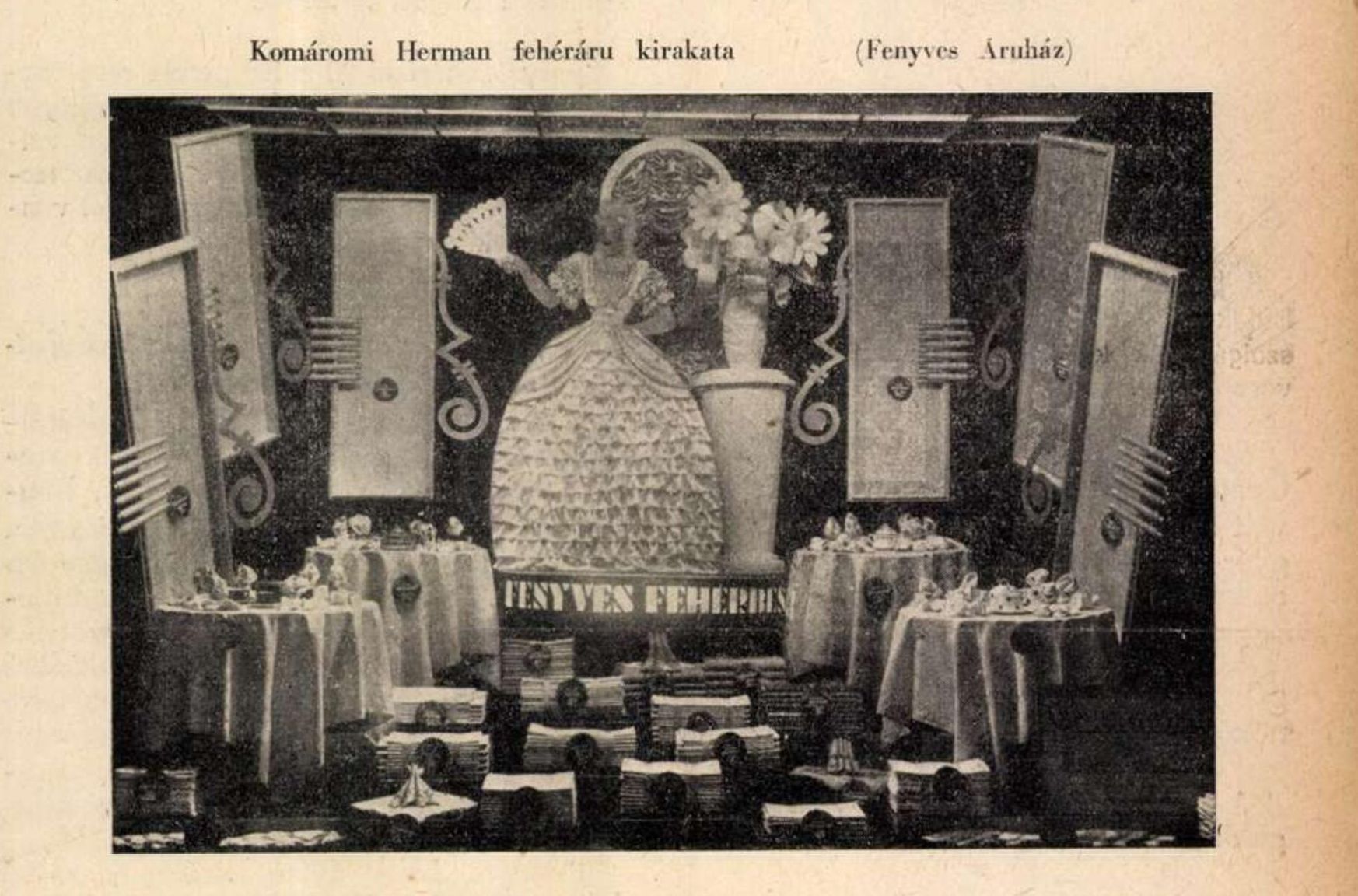

Shop windows in a 1938 issue of Textiilipar
In 1933, interior transformations were carried out in the shop. A large hall was opened up on the ground floor to house fashion shows. The goal of this space was, on the one hand, to present women's clothes imported from abroad, and also to showcase the store's own collection. By the time, Fenyves operated his own weaver and even employed a designer.
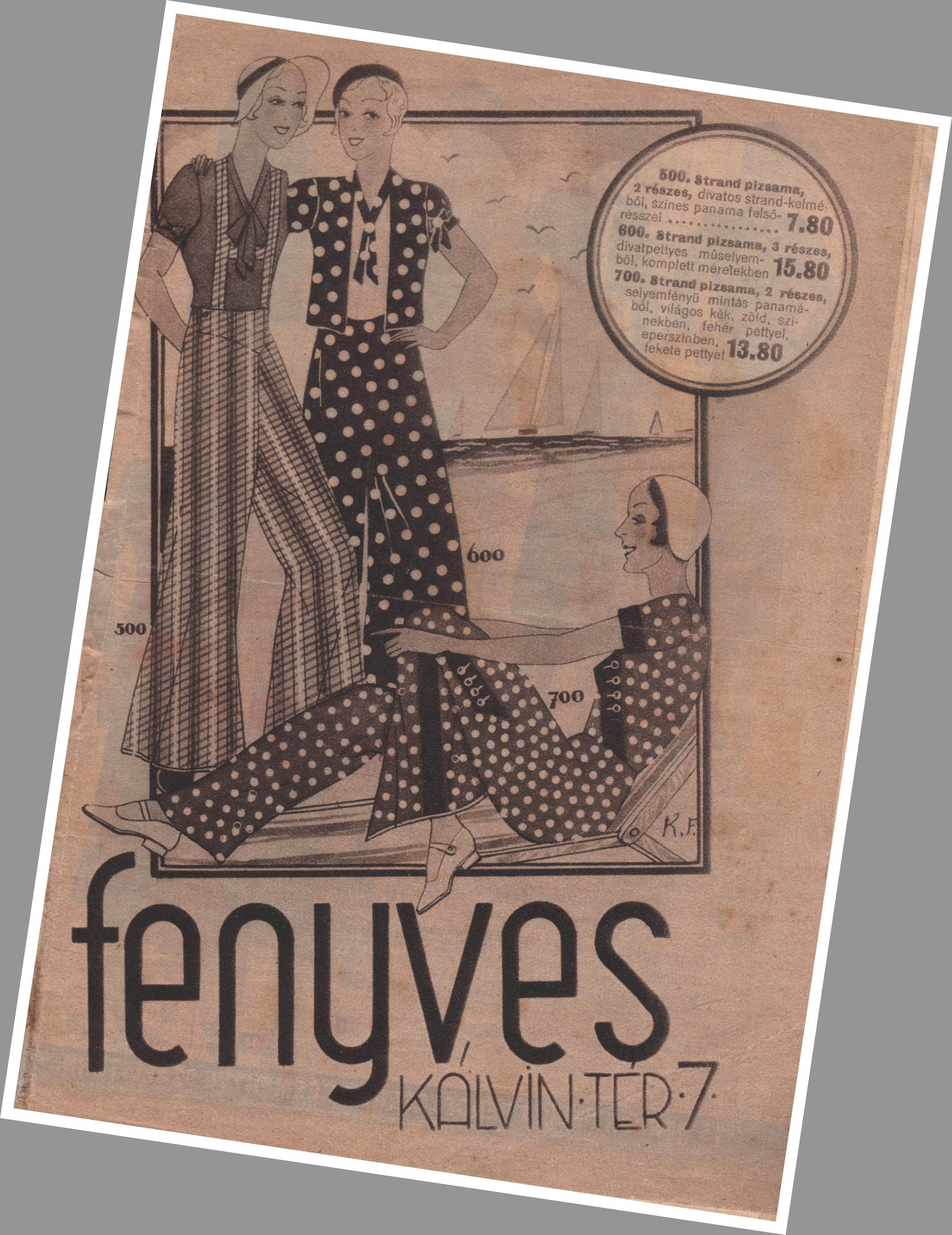
Catalogue from 1936
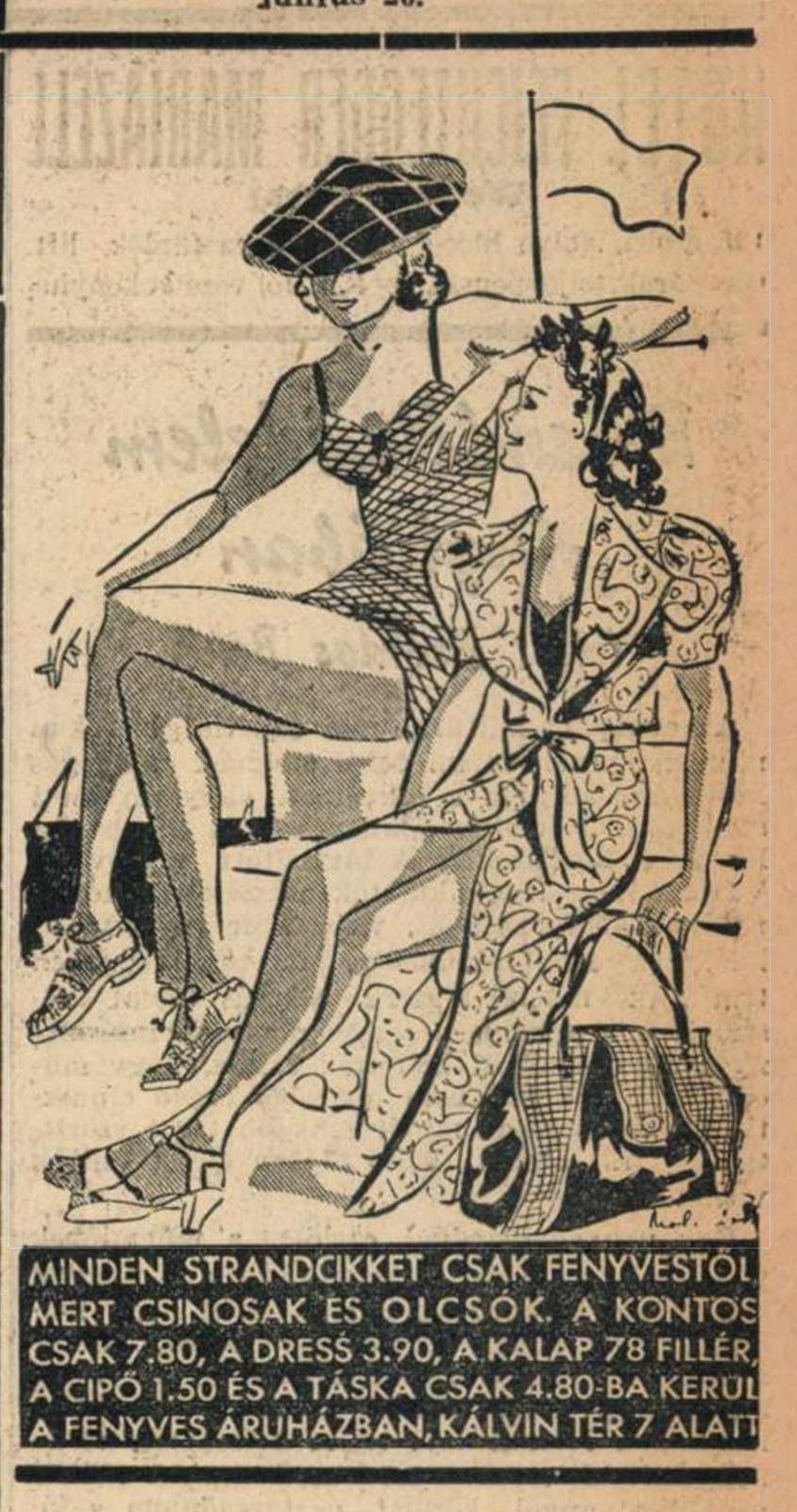
Advertisement in 12 June 1938 issue of Nemzeti Ujság (Source: Ferencváros Local History Collection)
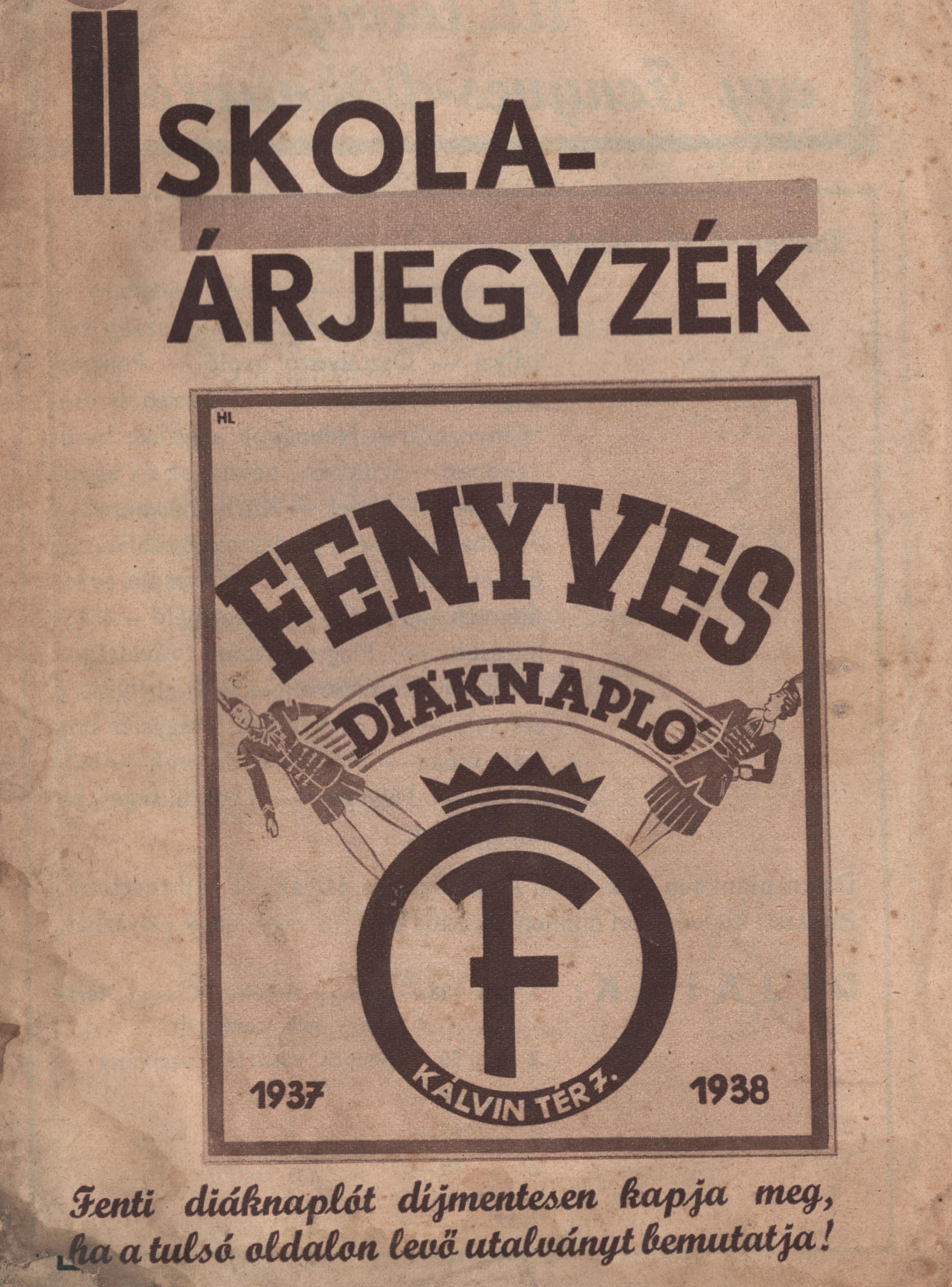
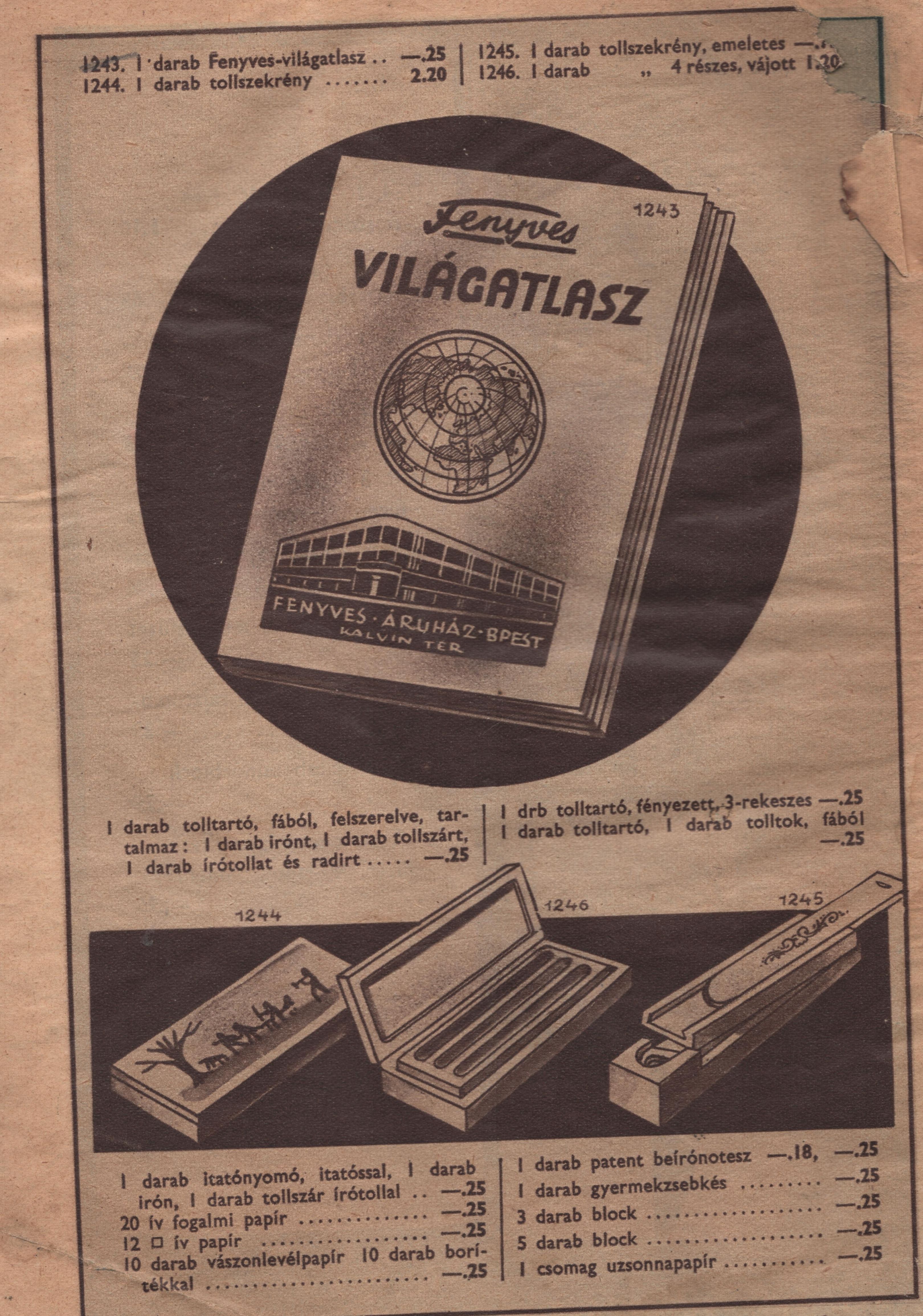
Catalogue of school supplies from 1937 (Source: Ferencváros Local History Collection)
Sadly, the Second World War and domestic politics made the operation of the company increasingly difficult. The Jewish owner and the family members involved in the management of the store sold their shares in 1944. In April 1944, Dezső Fenyves and his family were taken to the Auschwitz concentration camp from their home in Újpest. Only Jenő Fenyves, who lived in Budapest survived the war, but his trials were far from over.
Despite being able to recover most of the company's shares, the department store was taken from him in 1947. It was known as the Európa Department Store for a while, but in 1948 it became a branch of the State Department Stores. In 1952 it was renamed Szabadság State-owner Department Store, and in the 1960s it became the Kálvin Square branch of the Centrum chain.
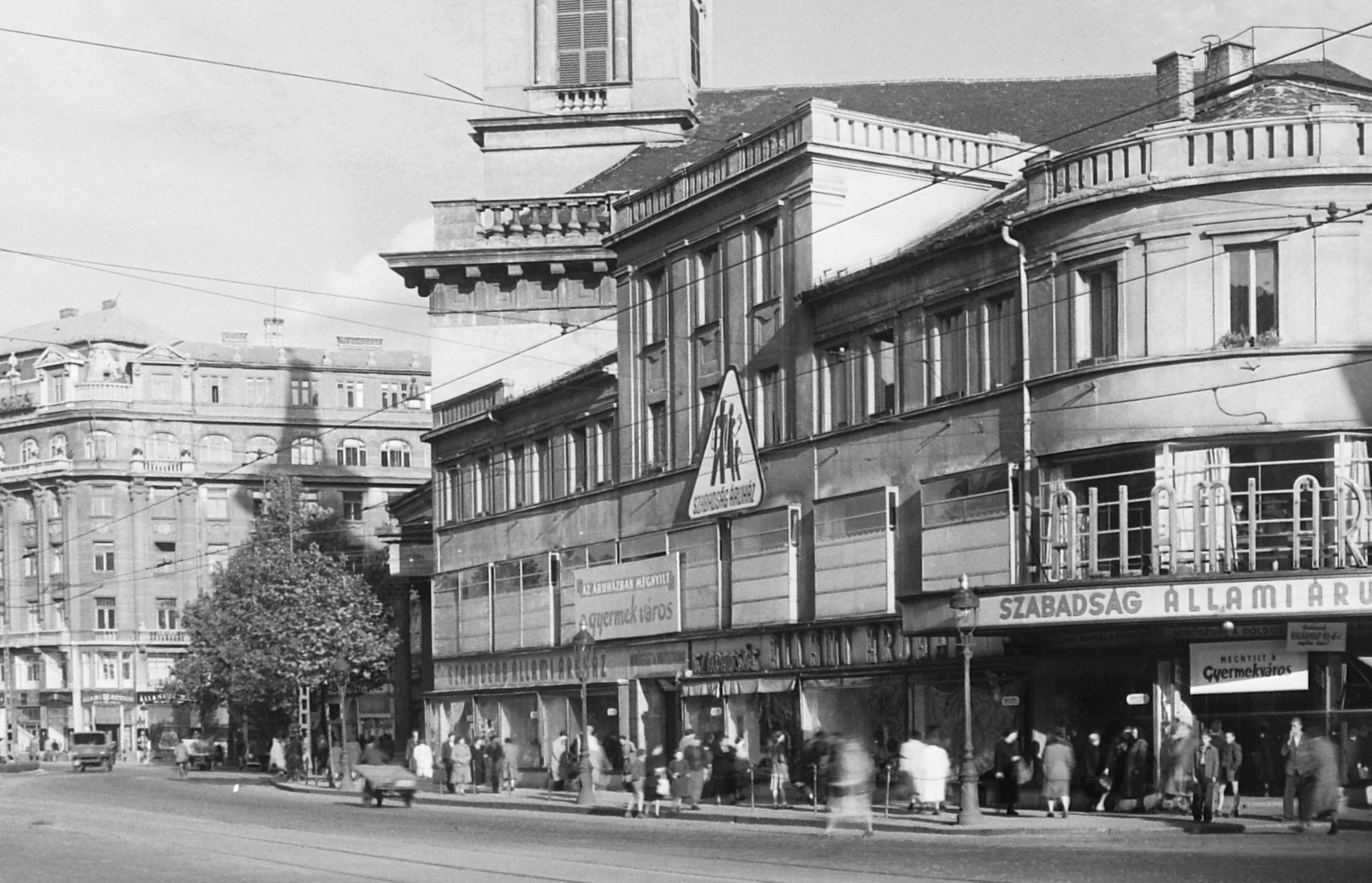 The Szabadság State-owned Department Store in 1954 (Photo: Fortepan)
The Szabadság State-owned Department Store in 1954 (Photo: Fortepan)
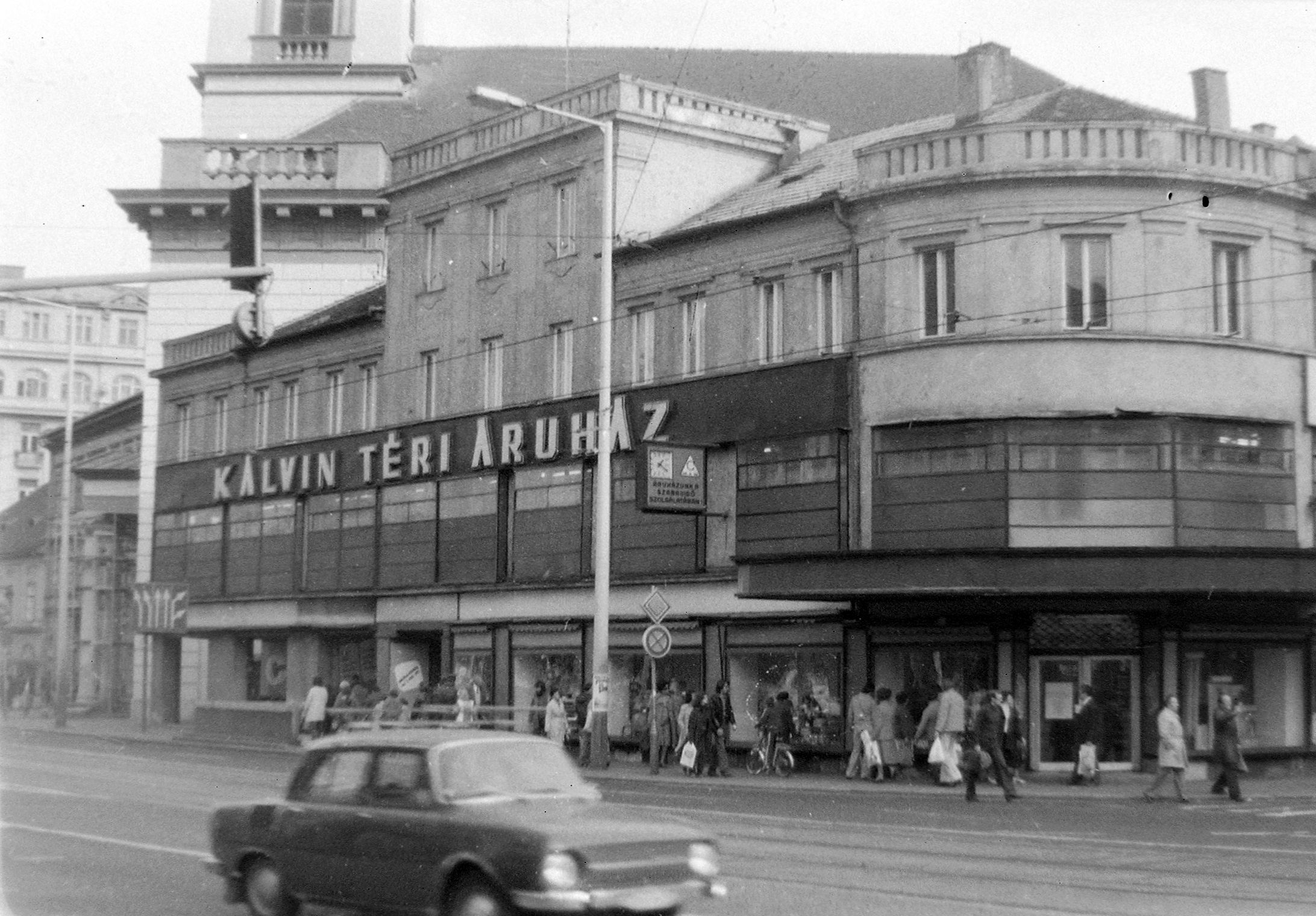 The Kálvin Square Department Store around 1970 (Photo: Fortepan)
The Kálvin Square Department Store around 1970 (Photo: Fortepan)
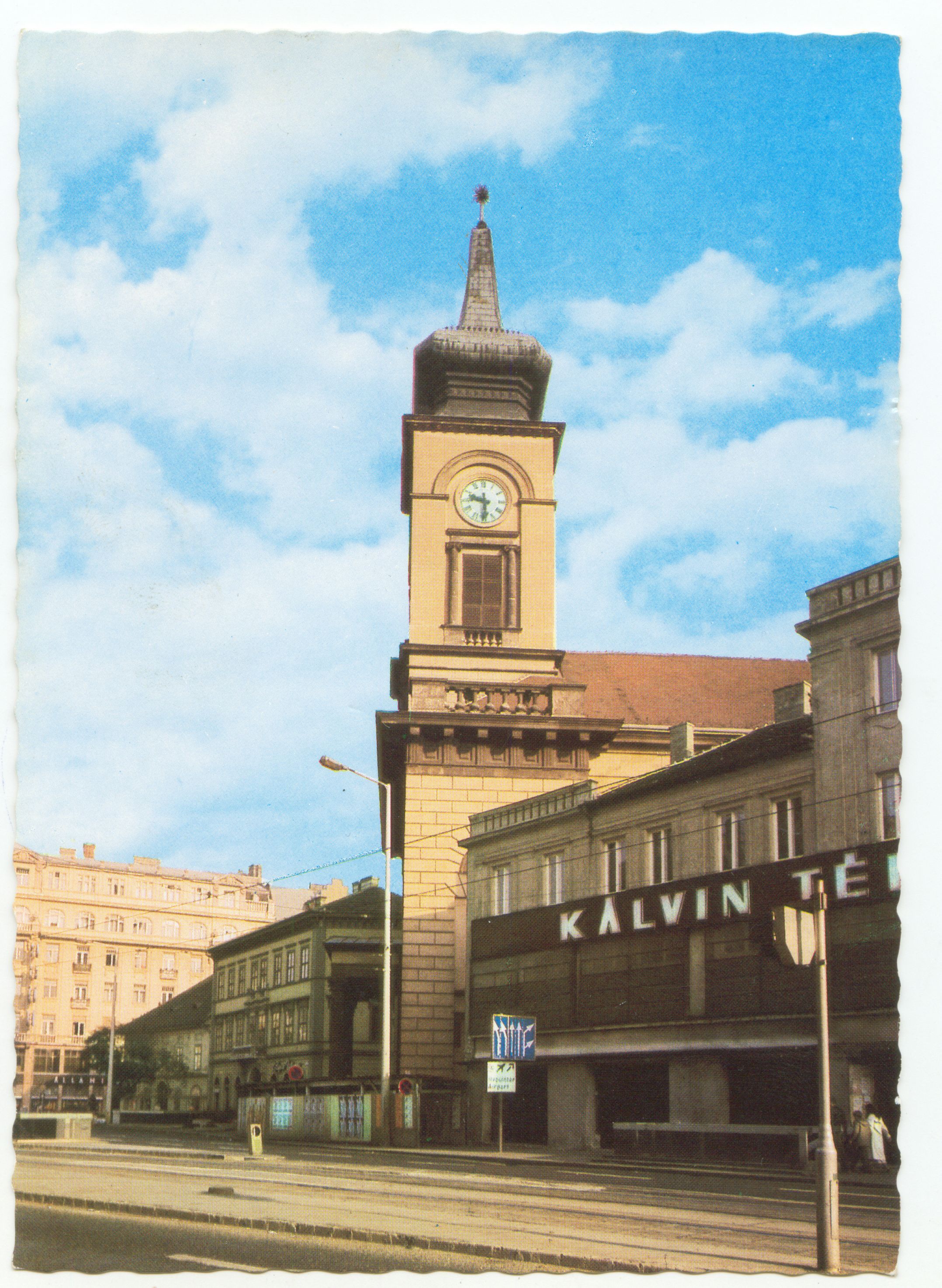
The shop on a postcard published in 1972 (Source: Ferencváros Local History Collection)
%4003.jpg)
The building in 2003 (Photo: Ferencváros Local History Collection)
In 1986, the building was renovated and renamed: Városkapu Üzletház ('city gate shopping centre'). Since the fall of socialism, the building has been returned to the Church, and the shopping centre continues to operate. Over the past 30 years, tenants have changed almost continuously, with the advertisements in the windows being replaced often. Its facade was renovated recently, and an effort to unify the shops' storefronts within seems to have been made. Hopefully, this memento of Budapest's shopping history will remain for years to come.
Cover photo: Fenyves Department Store in 1924 (Source: Tolnai Világlapja, 14 May 1924)

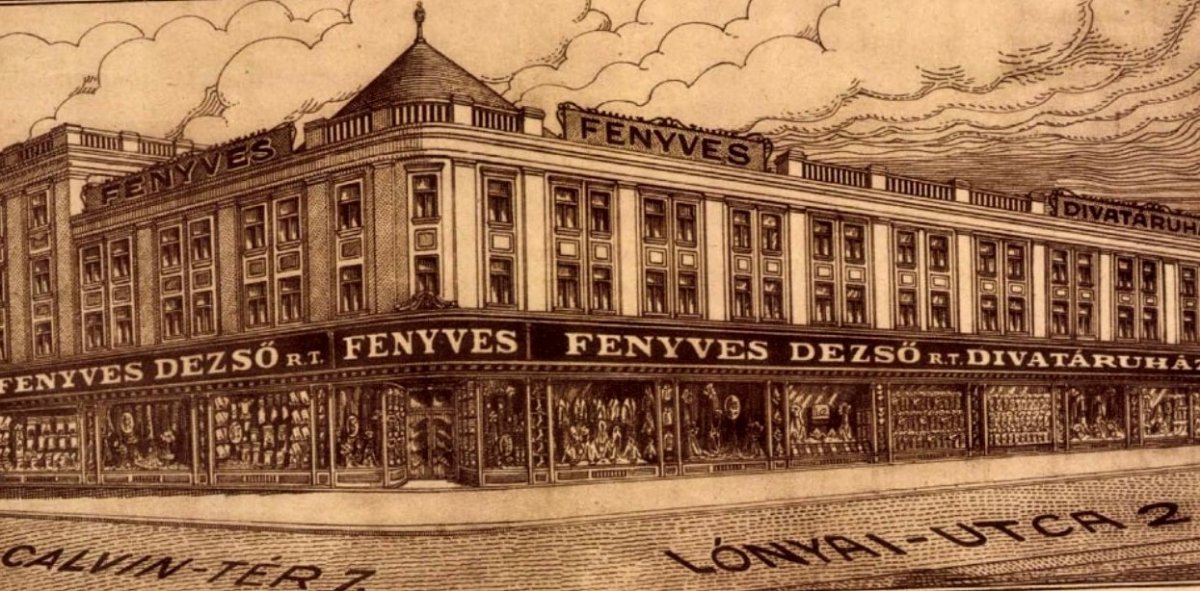



































Hozzászólások
Log in or register to comment!
Login Registration